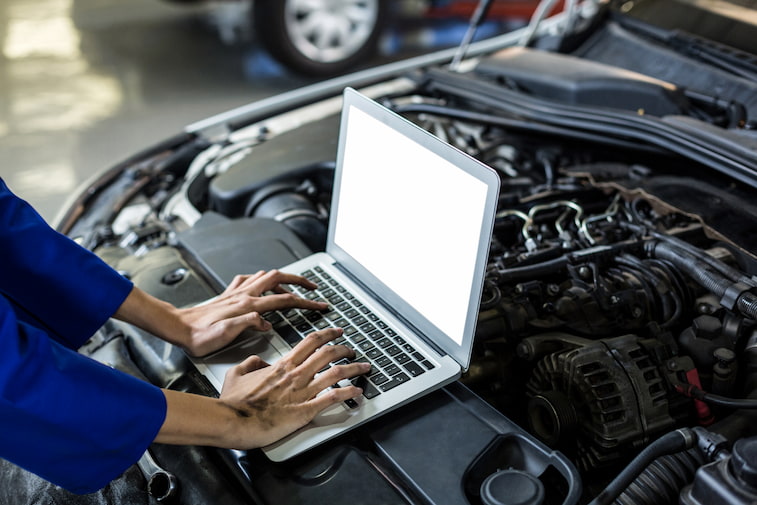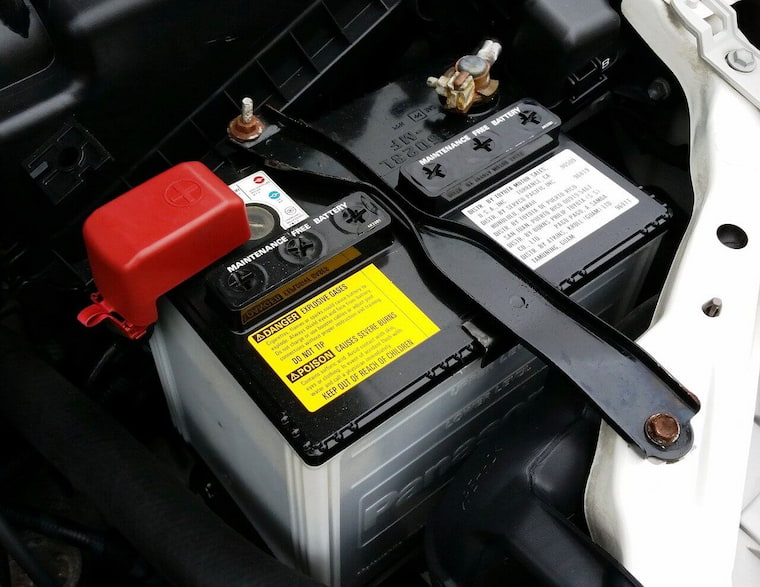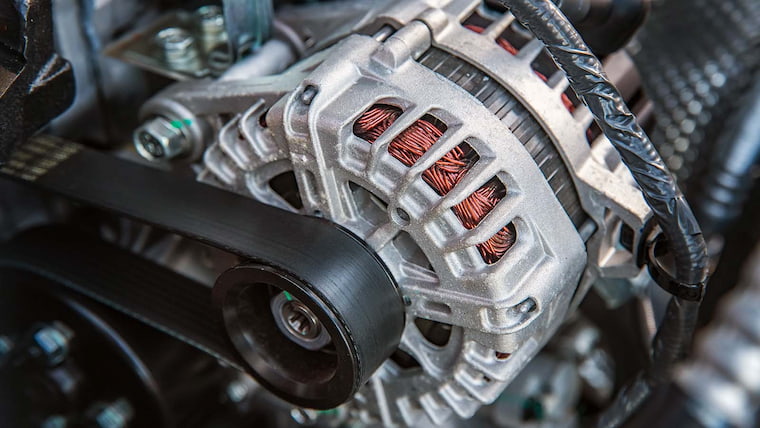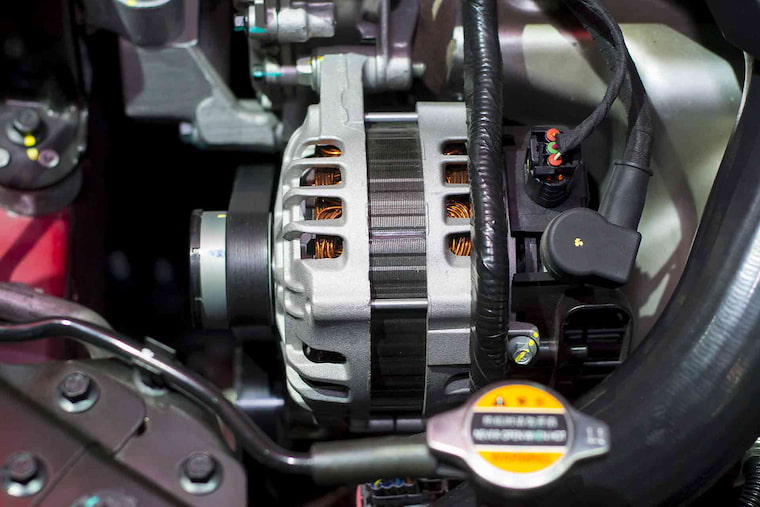Automotive
Understanding Your Vehicle’s Starting System: The Wonders of Modern Electrical Car Parts
Your car’s electrical system, and its charging, starting, and ignition systems in particular, are nothing short of amazing. Every command and impulse that’s relayed through the powertrain and its myriad of modules and safety sensors just to get your journey started are generated, conveyed, and executed by these systems.
Unlike the wiring harnesses that were used for decades, the complexity of today’s electrical systems is intimidating. It’s not until you look at your car’s battery, alternator, and starter motor, however, that you realize modern automotive electrical systems are fundamentally the same as they’ve always been.
No electrical components on your car are more exposed to environmental and operational extremes than these three components, and unless they’re all operating in perfect harmony, your car isn’t going anywhere. It underlines just how important their health is to your entire electrical system, and how you can’t afford to ignore them when they need replacing.

Quality Electrical Parts that Get Your Car Started
Make no mistake: in the same way that your car relies on the battery, alternator, and starter to run, these components also need each other to function. And because there’s a host of other sensors all connected to, and dependent on them, it shows why having premium quality electrical parts for cars means starting with the best components.
Although batteries are regarded as any car’s main electrical component, they not only needs the alternator to stay charged, but they also need the starter to turn the engine to get the alternator running. There are also as many as 30 different auto electrical part sensors on most modern vehicles that are needed just to get one started, including:
- Crankshaft and camshaft position sensors that control the timing of the engine when you turn the ignition;
- Mass airflow (MAF) sensors that determine how much fuel the engine needs to operate optimally after it’s started;
- Manifold airflow pressure (MAP) sensors to determine how much air the fuel being supplied needs;
- Temperature sensors to decide whether the engine’s rate of combustion requires cooling; and,
- Knock sensors to ensure no combustion irregularities take place if you stomp on the accelerator too soon thinking it’ll charge the battery quicker.
These are only a few of sensors and electrical auto parts that are on your car though, and they highlight how interdependent today’s electrical systems are. Let’s take a closer look at those main three components, and see what your alternatives if they aren’t performing correctly.
New Batteries That are Built to Last
Even though your battery is responsible for powering everything that’s needed to get started, it continues to handle a number of critical functions after you’ve turned the engine off. Even if it’s only powering your car’s alarm in the middle of the night, your battery is one automotive electric part that’s always working.

Heat, and wear and tear eventually take a toll on batteries though, and you need to be able to recognize the early signs that your battery’s nearing the end of its useful life, which could include:
- A persistent check engine or check battery light on the dashboard;
- Slow cranking or progressively harder starting; or,
- Physical damage, a swollen casing, or a discharge of electrolytic fluid.
If your battery’s ready to be replaced, you don’t want to drag your feet on getting it done. You want to do it as soon as possible, and you want one that’s either low- or maintenance-free, and features:
- A tough temperature and puncture resistant polypropylene casing;
- Polypropylene envelope separators to improve resistance to vibration and corrosion;
- Thick cast plates designed to reduce water loss;
- Flame arrestor protection from external ignition sources; and,
- A long-life warranty period of up to 40 months.
Depending on your vehicle and your driving habits, a new, heavy duty 12V battery rated 32 – 105 amp hours and up to 950 CCA (cold cranking amps) will be enough to power almost any group of accessories that you could use on the highway or off road.
Staying Fully Charged With a New Alternator
Your car’s alternator takes over the electrical system after the battery starts the engine. In fact, these belt-driven components not only take control of the car’s electrical functions, they even provide power to charge the battery.

Alternators, like batteries, also have a limited service life. Persistent overloading, incorrect drive belt usage, and old age will all impact the lifespan of an alternator, and some of the signs you can use to recognize that yours is going bad are:
- A dimmed, flickering, or completely absent battery warning light from the dashboard;
- Flickering, or frequently burned out head lamps;
- Unexplainable hiccups and glitches in instruments and other electronics;
- Battery overheating; and,
- A loud, screeching noise from the either the unit or the drive belt.
With persistent overloading being the primary cause of premature alternator failure, when it’s time to replace your alternator, you want one that’s power-rated for all the accessories you’re running on your vehicle. New, heavy duty 12V alternators boasting up to 230 amps are available, and you can get a unit that’ll stand up to any professional or recreational use that you have in mind. And when you replace your alternator, you also want to change your drive belts.
No More Intermittent Starting With a New Starter Motor
The starter motor is the battery-powered component that starts your engine by engaging with the flywheel. The conjoined starter solenoid is the switch that takes power from the battery when you turn the ignition switch, which in turn activates the starter motor.

As starters are usually attached near the bottom of the engine, they’re generally exposed to all the elements coming from the underside of the car. Corroded terminals, heat degradation, as well as wear and tear can all contribute to a starter motor going bad, the most obvious signs of which are:
- Extremely slow, or one only intermittent starting;
- A clicking sound, or smoke coming from under the car when you turn the ignition; and,
- All the dashboard lights illuminating when you turn ignition, but the car not starting.
It’s not uncommon for starter motors to be rebuilt. The problem with rebuilt units, however, is that the components inherently don’t all have the same rate of wear. A mix of old and new starter parts like brushes, magnets, and gears isn’t necessarily bad, but considering that the price of a rebuild is almost the same as the price of a brand new unit, the new unit just makes good sense.
With a new, soft-start starter motor that features built in circuit protection against thermal damage, extreme weather, and a range of voltage inconsistencies, buying a new starter is the right move to make when your old one goes bad.
The Final Word
At the end of the day, with well maintained charging, starting, and ignition electrical systems, you can feel confident about taking your vehicle anywhere, on or off road, without worrying about being left in a rut. It’s important, however, to make the right equipment choices at the first sign of electrical problems.














